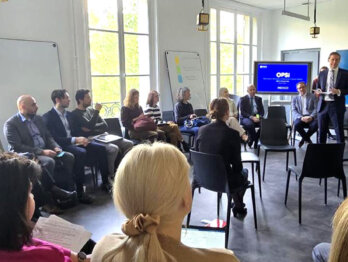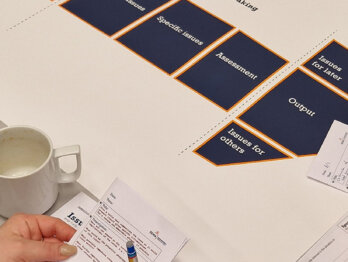An innovative public sector?
Today’s post is from the OECD Insights Blog.
The conference on Innovating the Public Sector: from Ideas to Impact showcased the public sector at its best. Innovators from around the world stood on stage to give short, dynamic talks about what they were doing at home. There were talks about evidence and innovation in the United States; about police using social media in Iceland; and one about reducing visa applications in Türkiye to three minutes online.
Participants also rolled up their sleeves to experiment with innovative approaches for policy making. They tried out design for public services, by mapping their own journey to the OECD and considering how it could be improved. They heard from policy makers from Chile to the United Kingdom, who shared their stories about how they are using innovation labs to build experimental, practical spaces to trial new ways of working and share what works.
For Australia’s Alex Roberts, the key message was that Australian civil servants are clearly not alone in their pursuit of innovation while Nesta’s Jo Casebourne discovered two favourite new terms for innovation – innoflation and incognivation.
Despite all this enthusiasm, the overwhelming consensus was that innovation in the public sector is still no easy feat. It’s difficult to get support from above, it’s difficult to have the time and space to come up with innovative solutions, it’s difficult to find the resources for unproven approaches, and it’s difficult rally others.
Over the past couple of years the OECD has been working with countries to develop the Observatory of Public Sector Innovation, to help them make the most of innovation. The Observatory puts the experiences of innovators from across the world at everyone’s finger tips. Want to know how the Icelandic police actually made social media work for them; or a Finnish hospital used service design to develop a better, more user friendly hospital? The Observatory contains hundreds of examples from across the OECD about how public services are developing more effective, innovative services.
It shows how countries are innovating across the whole policy making process. They are opening up policy making, so that a broader range of actors can shape policies. One way that they are doing this is by making the most of technological developments. Austria for example, is designing new strategies by crowdsourcing comments, advice and ideas from the public demonstrating how governments can involve a wider range of perspectives to source innovative ideas.
The Observatory also demonstrates that innovation is as much about the journey as the results at the end. That means rethinking how to design new services and embracing experimental approaches, prototyping, and trial and error. Public organisations need more agility, more testing and more experimenting on a small scale before investing large sums to roll out a new policy or service. In the United Kingdom for example, the use of randomised control trials is providing real evidence on the results of policy interventions on a small scale, providing a clear evidence base for action. In Australia, the Concept Lab allows the government to trial and fully evaluate potential improvements to services for families, the unemployed, care givers and parents under actual workplace conditions prior to wider roll-out.
Perhaps most importantly, the Observatory also highlights how innovation is resulting in better solutions for citizens, by responding to citizens’ needs, moving the services to them. In France, unoccupied rooms in housing are being used so that the elderly can share flats with others, at once reducing their social isolation and making use of existing underexploited resources. In Sweden, parents can now access information about their child benefits directly from their phone through an app, which also includes up-to-date information for all citizens on their old age pensions.
The Observatory is also an innovation in itself. It was built with an agile, staged approach. Users in countries were involved throughout, testing and retesting prototypes to ensure that it delivers on user needs and to enhance the user experience. More importantly it is a direct interface with innovators themselves – from local schools and hospitals to central government offices – anyone working in the public sector with a story to tell about innovation can use the Observatory to reach an international audience. Through its interactive features users can make their views heard by voting in regular polls, discuss with other users to learn about their experiences, ask questions, and even create their own groups for collaborative projects.
It is just at the beginning of its story. Over the coming months and years we hope that many more people across the public service and beyond will use the Observatory to interact with others and share their examples of innovation.










